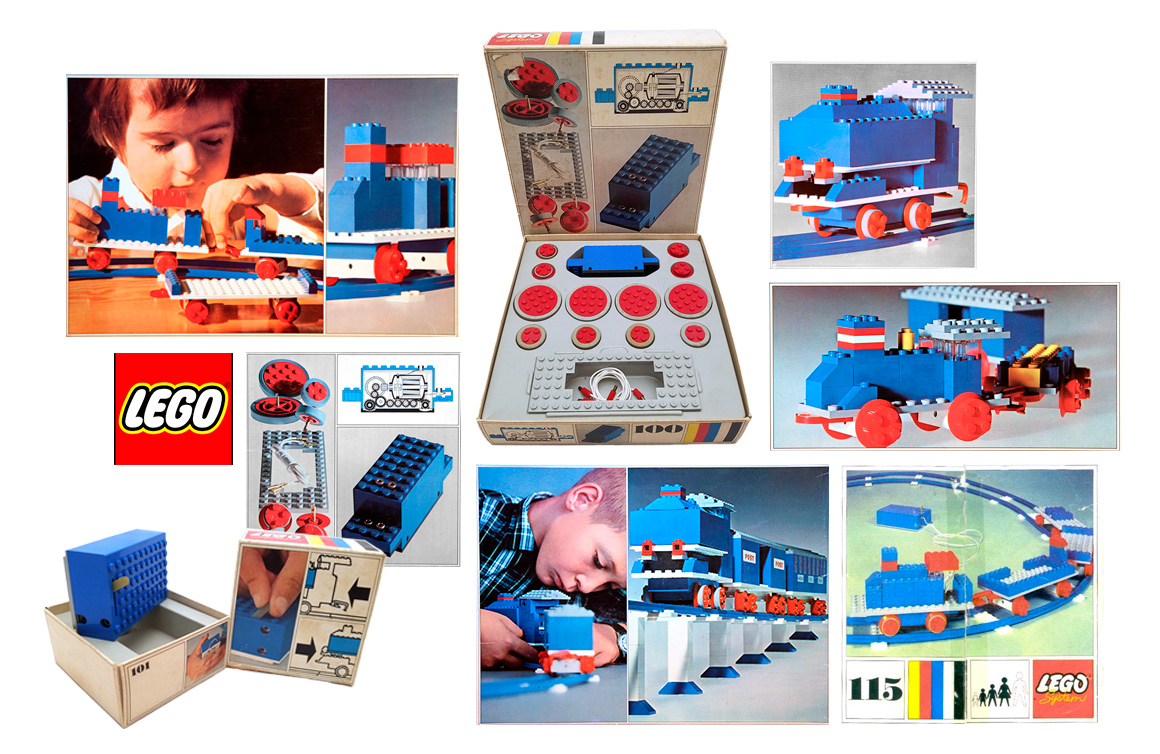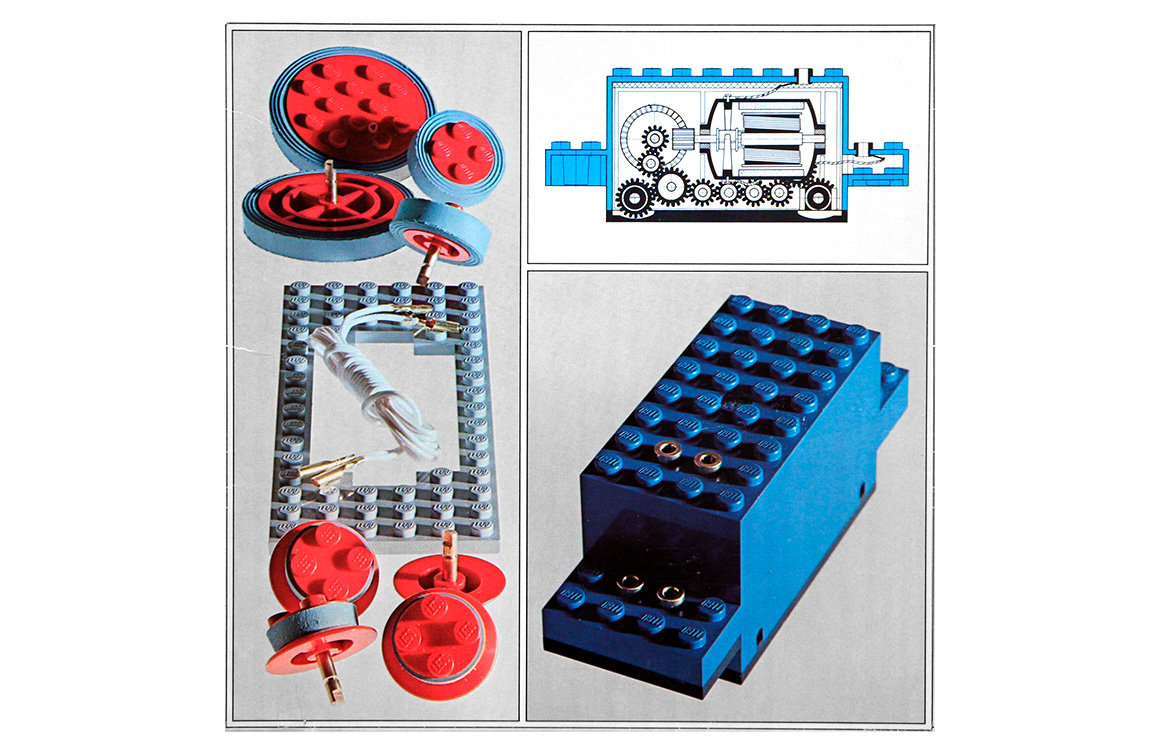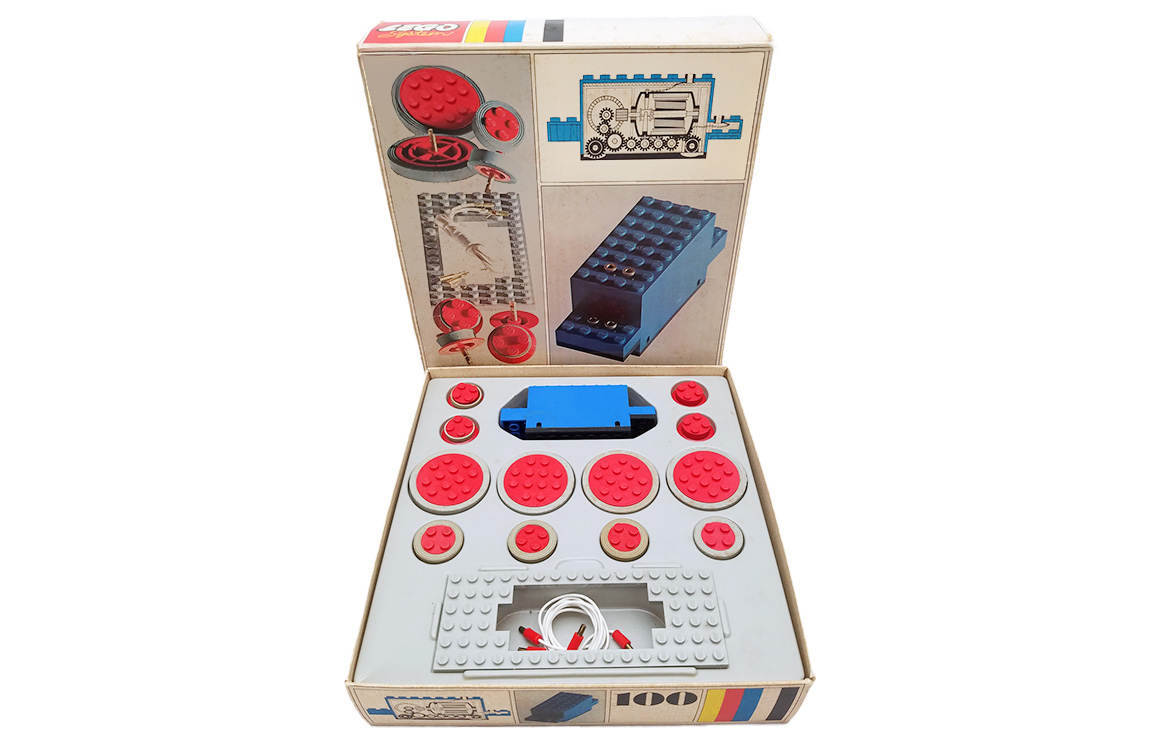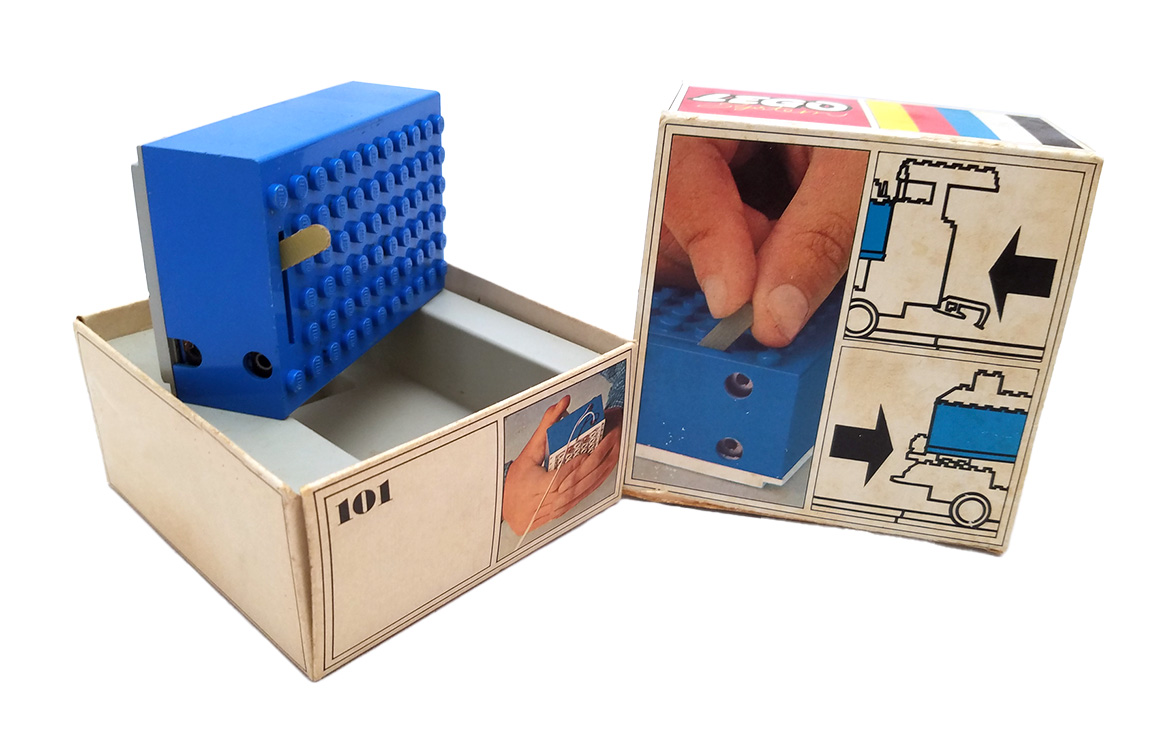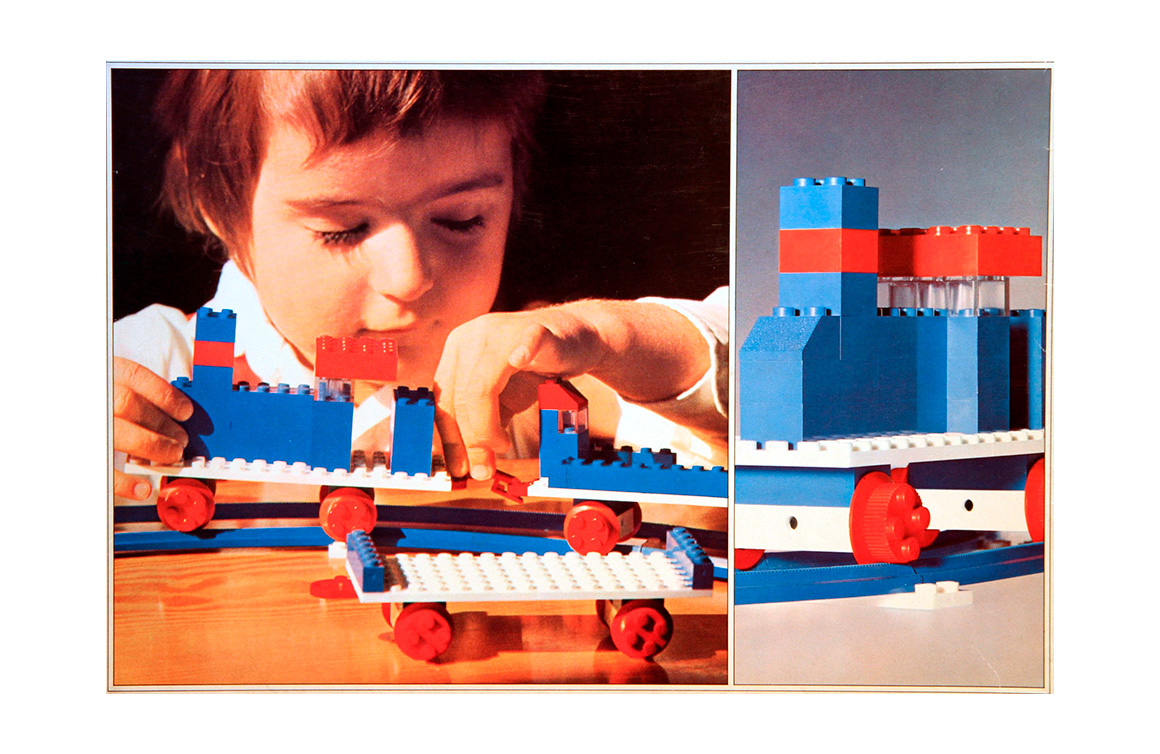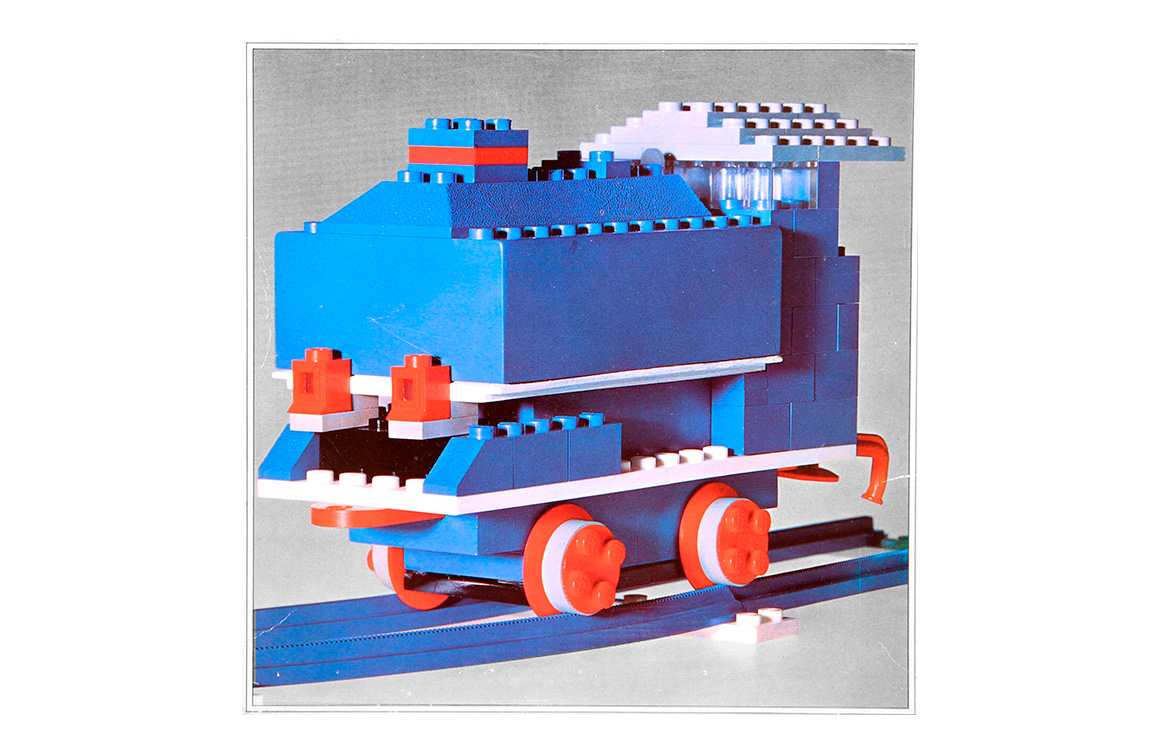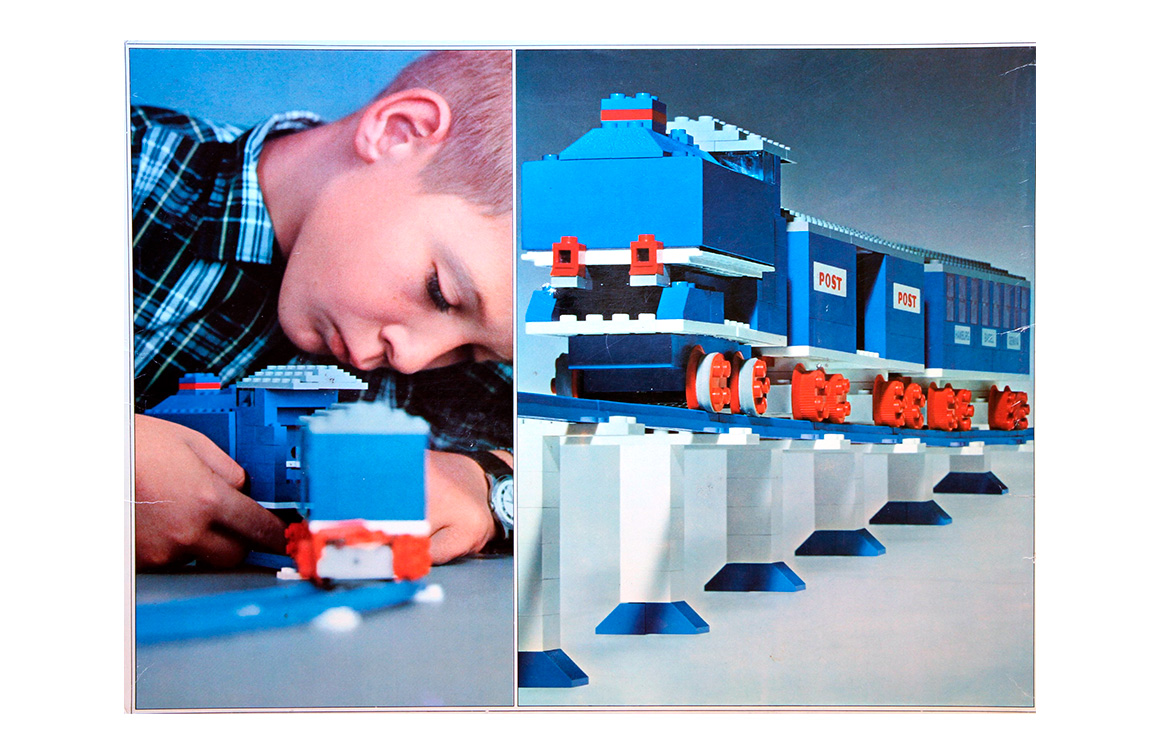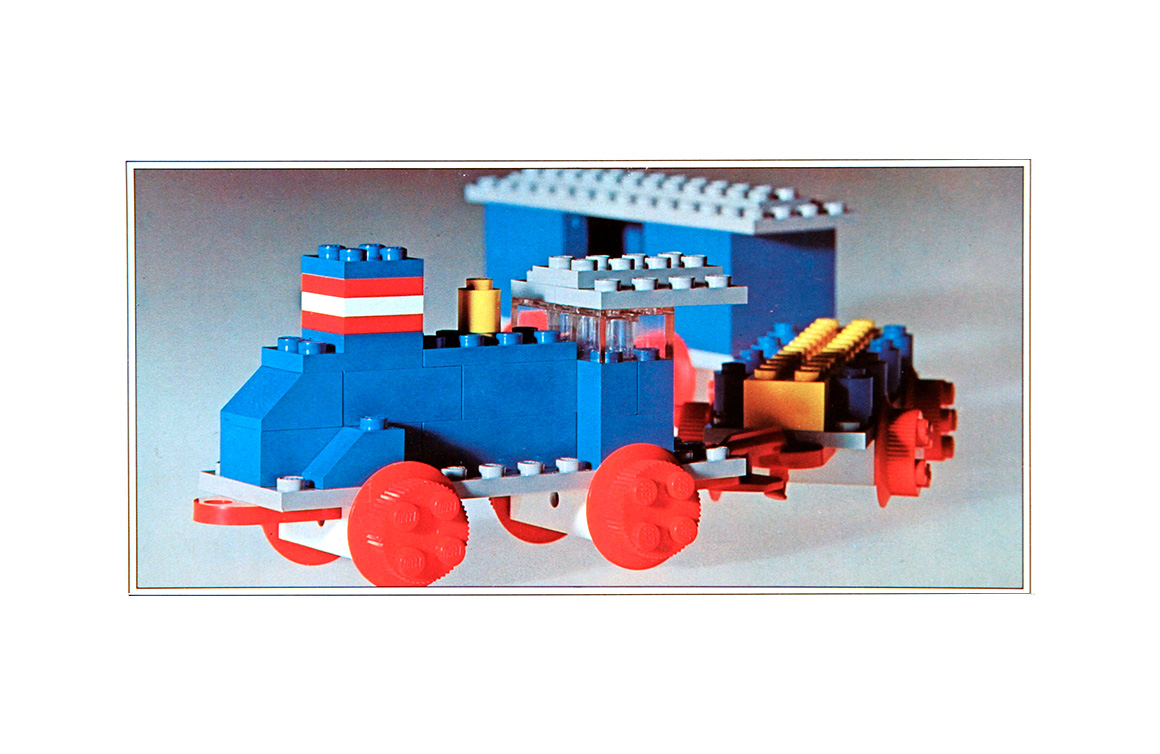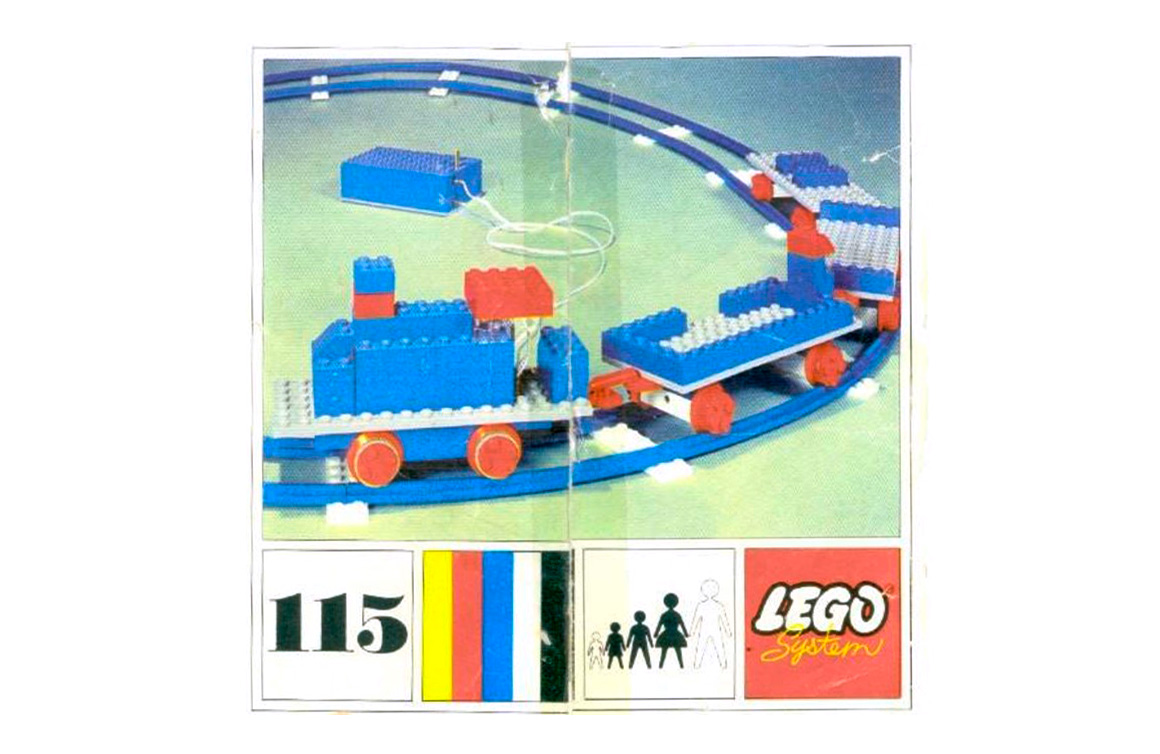The LEGO hobby has always had some synergy with the model train hobby. Some of the earliest LEGO sets were purposely scaled to work with hobby trains. In the 1950s, promotional material often showed a LEGO town layout surrounded by train track, with a model engine going around it. The diecast cars and plastic trees that were included in such sets were similar to those found in model railway boxes.
By 1966, though, the LEGO Group realized that there was an opportunity to offer trains that children (and adults) could build. The company’s toy designers created special track pieces and compatible wheels so that these new trains would be able to go around a LEGO layout.
This new range of LEGO trains launched with varying products for different audiences: there were push-along trains with no electrical element at all and battery-powered motorised trains. In fact, the core box was released in two slightly different versions: 111 Starter Train Set without Motor and 115 Starter Train Set with Motor.
By offering both types of train, the LEGO Group catered to children of all ages and adults who wanted to see the engines move without their hand guiding them. The non-motorised boxes could also be sold at a lower price, making them accessible to a wider audience.
LEGO trains were still a long way from living up to what hobbyists expected, though. These early trains were chunky, made up of a lot of traditional bricks and the small number of slope pieces that were available at the time. They approximated the shape of trains as far as was possible at the time but they lacked the polish of modern trains.
They do have a certain charm, though, as it’s quite satisfying to see a blocky, child-like train running around a track. The colours were a mix of the classic LEGO blue, red, and grey. The early wheels had four studs, which was a nice touch that ensured you couldn’t mistake these for anything other than a LEGO product.
As well as buying single trains or a box with a full layout, the LEGO Group sold 4.5-volt motors, straight track, curved track, and empty wagons — you could very much pick and choose what you wanted to assemble whatever train you desired.
Once the LEGO Group had launched this new line of trains in the 1960s, there was no going back. Through the years, the company continued this pattern of selling full layouts, individual trains, and accessory packs, making it just as much of a system as the regular LEGO elements. The push-along trains didn’t last for long, however, as the magic of motion proved to be what made locomotives a special part of the LEGO product range.
COLLECTOR CONSIDERATIONS
Because the 1966 trains are more rudimentary than what came later, the prices on the aftermarket are often better than you might expect. The bigger challenge when collecting them today is getting them in good condition and with all of their parts in working order.
Note: If you buy something using the eBay link in this story, we may earn a small commission. Thank you for supporting independent toy journalism!

